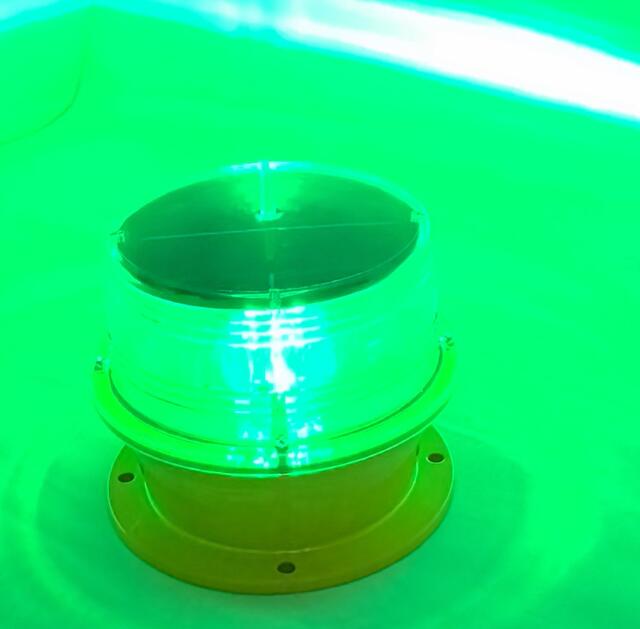Harnessing Solar Power: The Rise of Solar Marine Light Technology
Solar marine lights are revolutionizing the maritime industry, offering a sustainable and efficient solution for illuminating waterways, harbors, and offshore structures. These lights, powered by solar energy, combine advanced technology with durability to ensure safe navigation and enhanced visibility in various marine environments. As the world shifts toward renewable energy, solar marine lights stand out as a key innovation for sustainable maritime operations.
What Are Solar Marine Lights?
Solar marine lights are standalone lighting systems specifically designed for marine applications. Equipped with solar panels, these lights capture sunlight during the day to charge their internal batteries, enabling them to operate autonomously at night or during low-light conditions. They are typically used to mark navigational channels, buoys, docks, and offshore platforms, ensuring clear visibility for vessels.

These lights eliminate the need for external power sources and extensive wiring, making them highly versatile and easy to install. With their robust construction and energy-efficient performance, solar marine lights have become an essential tool for enhancing maritime safety and reducing environmental impact.
Key Features of Solar Marine Lights
Solar marine lights are designed to deliver reliable performance in the demanding conditions of marine environments. Their standout features include:
Solar Power Efficiency: High-quality photovoltaic panels ensure maximum energy capture, even in low-light conditions.
Durable Design: Built to withstand harsh weather, saltwater corrosion, and physical impact, these lights are ideal for long-term use.
LED Technology: Energy-efficient LEDs provide bright and consistent illumination with minimal power consumption.
Autonomous Operation: Solar marine lights operate independently, with automatic activation at dusk and deactivation at dawn.
Compact and Lightweight: The all-in-one design ensures easy transport, installation, and maintenance.
Adjustable Settings: Many models offer customizable flash patterns, brightness levels, and color options to meet specific needs.
Applications of Solar Marine Lights
The versatility of solar marine lights makes them suitable for a wide range of applications, including:
Navigational Aids: They mark waterways, channels, and buoys, guiding vessels safely through complex routes.
Offshore Installations: Solar marine lights are used to illuminate oil rigs, wind farms, and other offshore structures, preventing collisions.
Harbor and Dock Lighting: These lights enhance visibility at ports, marinas, and piers, ensuring safe docking and loading operations.
Aquaculture: Fish farms and aquaculture facilities utilize solar marine lights to delineate boundaries and improve operational safety.
Temporary Installations: Solar marine lights are ideal for temporary lighting during maritime construction projects or emergency situations.
Benefits of Solar Marine Lights
The adoption of solar marine lights offers numerous advantages for the maritime industry:
Environmental Sustainability: By harnessing solar energy, these lights reduce reliance on fossil fuels and minimize greenhouse gas emissions.
Cost Savings: The absence of external power requirements and low maintenance needs result in significant cost savings over time.
Easy Installation: With no wiring or complex infrastructure needed, solar marine lights can be quickly deployed in any location.
Reliability: Autonomous operation and durable construction ensure consistent performance in diverse marine conditions.
Safety Enhancement: Bright and reliable illumination improves visibility, reducing the risk of accidents and collisions.
Innovations in Solar Marine Light Technology
Advancements in technology continue to enhance the capabilities of solar marine lights, driving their adoption across the maritime sector. Key innovations include:
Smart Features: Integration with GPS, remote monitoring, and wireless control systems allows for precise management and synchronization of multiple lights.
Improved Solar Panels: Higher efficiency photovoltaic cells enable faster charging and better performance in low-sunlight regions.
Advanced Batteries: Longer-lasting and more durable batteries ensure extended operation, even during prolonged cloudy periods.
Compact Optics: Enhanced lens technology improves light dispersion, increasing visibility over greater distances.
Hybrid Models: Combining solar power with backup energy sources ensures uninterrupted operation in extreme weather conditions.
Selecting the Right Solar Marine Light
Choosing the right solar marine light for a specific application requires careful evaluation of several factors:
Brightness and Range: Ensure the light provides adequate visibility for the intended area.
Durability: Select models designed to withstand the specific environmental challenges of your deployment site.
Power Autonomy: Evaluate the battery capacity and charging efficiency to ensure reliable performance.
Regulatory Compliance: Verify that the light meets international maritime safety standards.
Customizability: Look for models with adjustable settings to match operational requirements.
Solar marine lights represent a significant leap forward in sustainable maritime technology. Their ability to operate autonomously, coupled with their durability and energy efficiency, makes them indispensable for modern maritime operations. By reducing environmental impact and enhancing safety, these lights are paving the way for a greener, more efficient future in the maritime industry. As innovations continue to emerge, solar marine lights will play an even greater role in illuminating the world’s waterways.
